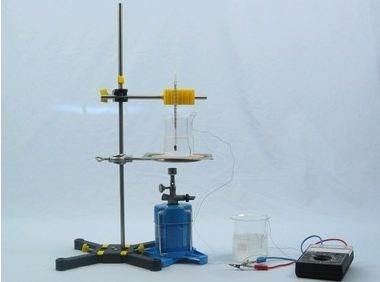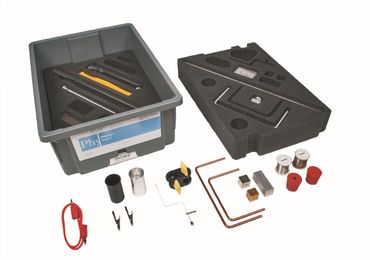Principle
If two different metals are in contact, a contact potential results from the different electron affinity of the metals' surfaces. The size of this potential is a function of the temperature since the electron's kinetic energy increases with increasing temperature.
These potentials also occur when the thermocouple is connected to a voltmeter. However, they cancel each other (i.e., they do not falsify the measuring results) if both leads which are connected to the meter are of the same material.
A thermocouple consists of a pair of different metals, e.g. iron and constantan. If the two contact points have different temperatures, the difference between the contact potentials can be measured as thermo potential.
Benefits
- Real stand material for an esecially stable and safe setup
- Student-suitable experiment descriptions with reports available


